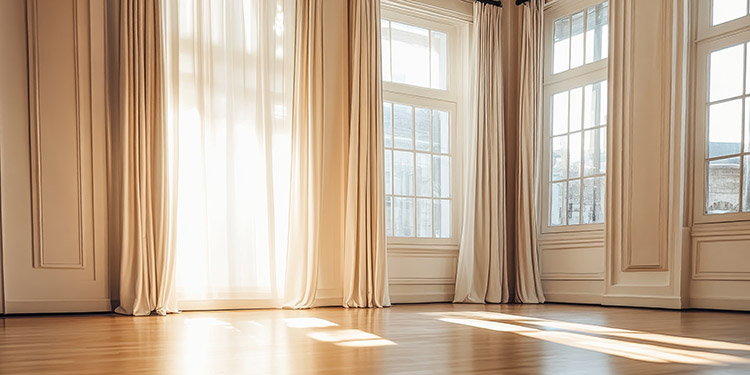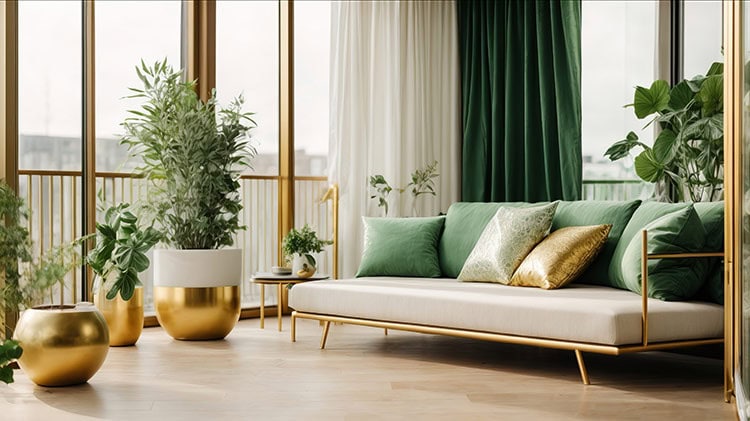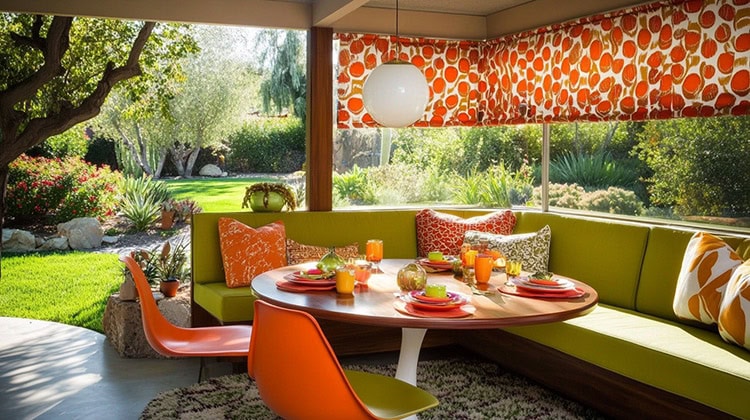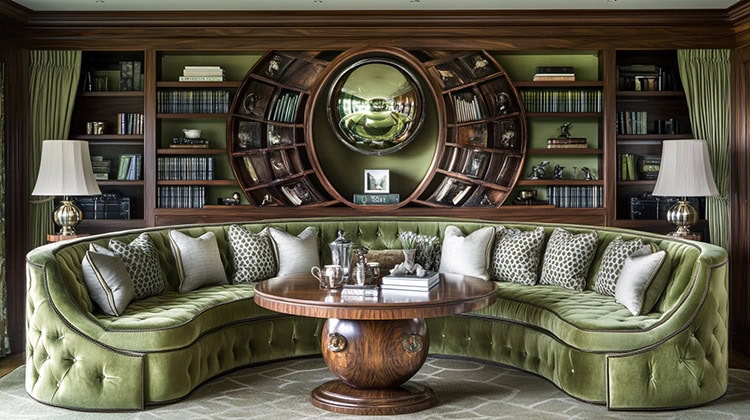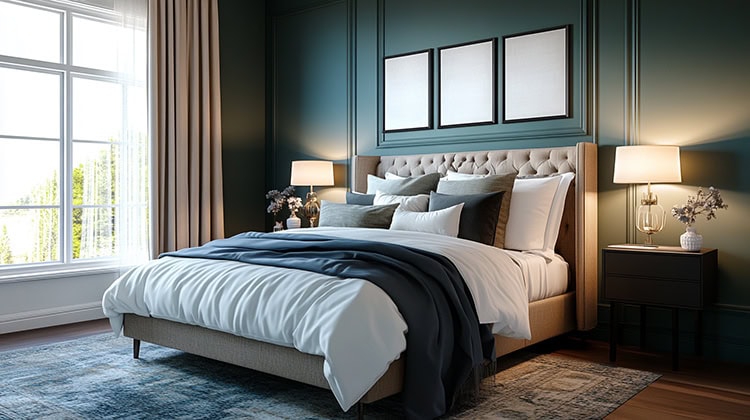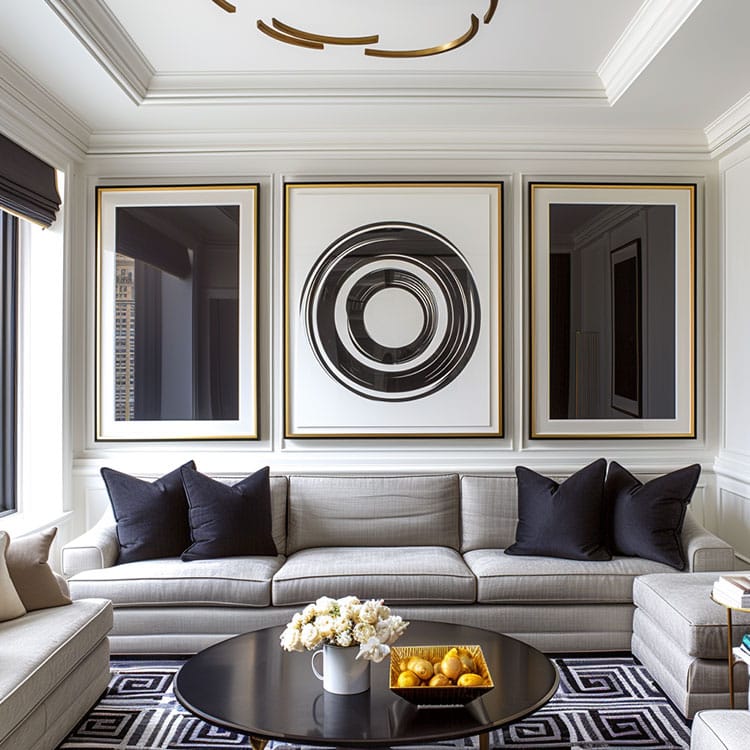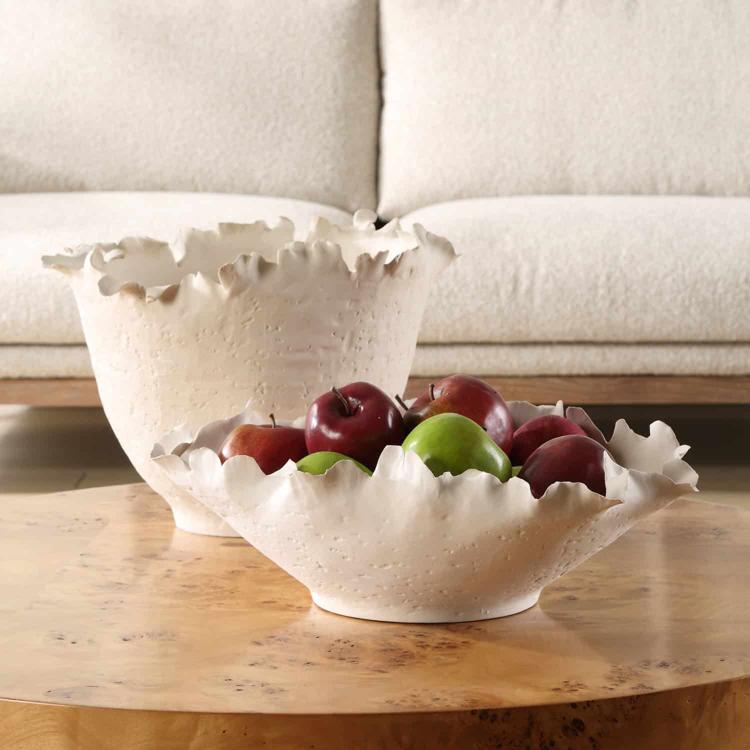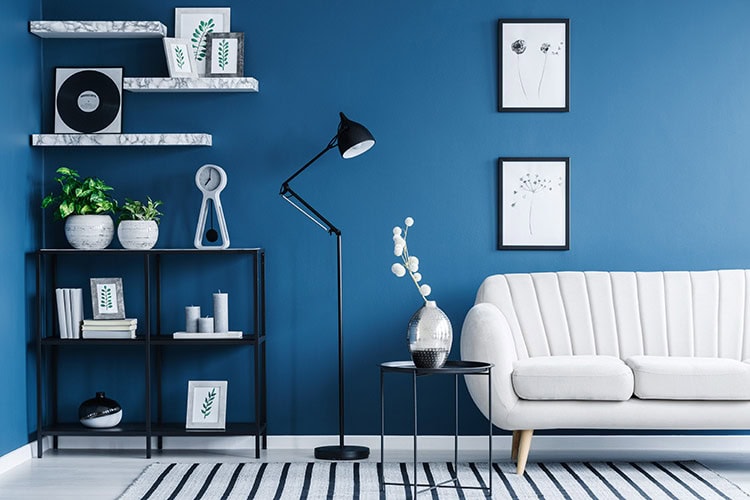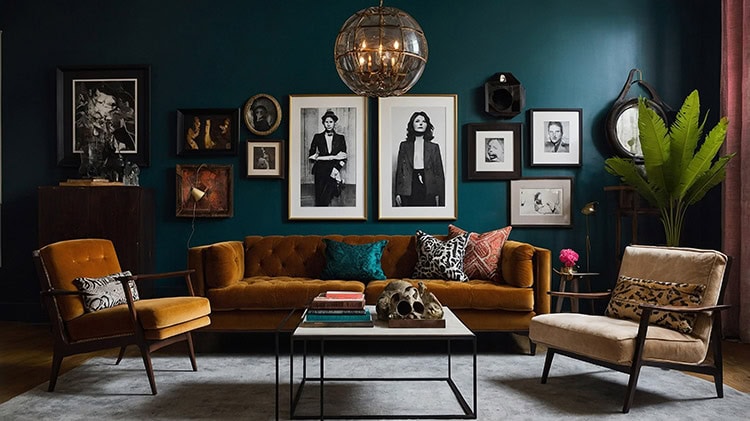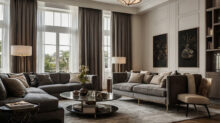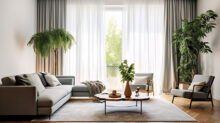One of the easiest ways to finish off a room is to add window treatments. However, with so many choices, it can be difficult to make a decision as to what will look best. Whether you have a taste for the traditional, the contemporary, or something in between, it’s important that your window treatments match your design personality.
Before you make a final decision, here are some things to consider:
- Color, pattern, and texture. These three elements, when teamed together, will both enhance your window and complete the look of your space.
- The manipulation of the fabric. To elaborate, this means decorative elements (tassels, swags, banding, ruffles), pleating (butterfly, box, pinch, reverse pinch, pencil), hanging method (hooks, tab-top, rings, grommets), and type (shade, curtain, drapery panel, cornice, valance).
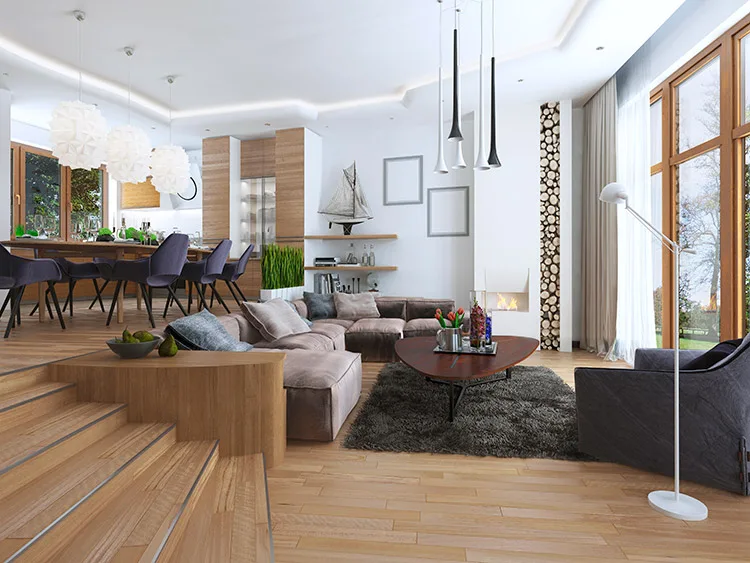
This article will examine three popular styles (traditional, contemporary, and transitional) and the elements of different window treatments that will best represent that look. Continue reading to find out what your window treatment style is.
Traditional
Traditional design often has furnishings that reflect 18th century English, 19th century neoclassic, French country, and British Colonial revival. Mid-tone colors and muted fabrics in simple solids, florals, stripes, or plaids finish out the look.
In regards to traditional window treatments, it’s all in the details. It’s those details that can easily turn window treatments within a traditional space into a decorative element that makes an eye-catching focal point.
While it is often true that traditional treatments are mainly looked upon as incredibly decorative, it doesn’t always have to be the case. Yes, grand swags and mounds of patterned fabric trimmed in tassels make a dramatic statement, but soft patterned roman shades and simple, solid-colored box pleat drapes can be just as appealing. Even something like simple plantation shutters would look lovely, too.
Speaking of patterns…
Patterns are a huge component of traditional decorating style. Plaids, stripes, florals, toile, and more are all welcome — sometimes, all in the same room. With that said, a traditional color palette is usually laid-back and mellow. You can certainly mix and match your patterns, but avoid going too bold or splashy. Neutrals such as cream, beige, taupe, and tan will never let you down, however, traditional interiors can look amazing if you decide to branch out into deeper browns, reds, greens, and blues. If you haven’t used many patterns elsewhere in your home, this is your chance!
Contemporary
Contemporary design is relatively easy to spot because of its clean, sleek lines and muted neutrals, accompanied by bold punches of colors in furniture and accessories. Furniture often has exposed metal frames and sits low to the ground, while graphic elements are brought in through artwork and accents. The vertical lines of drapery can really play up contemporary architecture by drawing your eye upward. To keep a clean and simplistic look, lean toward window treatments that minimize or hide the hanging systems.
The terms modern and contemporary are often used interchangeably, however, modern refers to the design of a specific time or era, whereas “contemporary” refers to the aesthetic. This means “contemporary” design is constantly changing. Therefore, if the window treatments you are considering suit the contemporary design aesthetic, then the window treatments can be called contemporary.
Wondering what specific window treatments work best in a contemporary home? Grommet drapery, woven wood shades, and roller shades will always be wise choices. For an industrial look, hang those grommet-type drapes from a stainless steel rod. When it comes to fabric, pay attention to color as contemporary treatments look best in white, grey, and other natural hues. If you need to bring patterns into the room, consider roman shades covered in geometric shapes.
Transitional
Transitional design bridges contemporary and traditional design. While some pieces contain a historical aspect, other pieces have an updated look. Window treatments for a transitional setting generally focus on color, texture, and pattern. Vertical lines in the drapery soften the strong architectural lines of windows and enhance the living space. Incorporating the same fabric on different types of window treatments also represents transitional design well. Don’t be afraid to play with large-scale patterns. When done correctly, it can make a huge impact on your space.
Want to embrace the transitional look to the fullest? Consider laying your window treatments. Layering offers you the chance to strike that perfect balance that comes from combining a more traditional window treatment such as draperies with a more modern window treatment option such as shades.
Let Us Help You Embrace Your Window Treatment Style
So, what is your window treatment style? If you’d like to learn more or need guidance in what fabrics would be best for the look you want, stop in to speak with a Fabric Resource associate. Or, visit us online to browse our wide selection of discount designer fabrics. While you’re at it, be sure to choose a few home accessories that will complement your window treatment fabric. We really do have so many items that will give your home a look that truly reflects your style.

